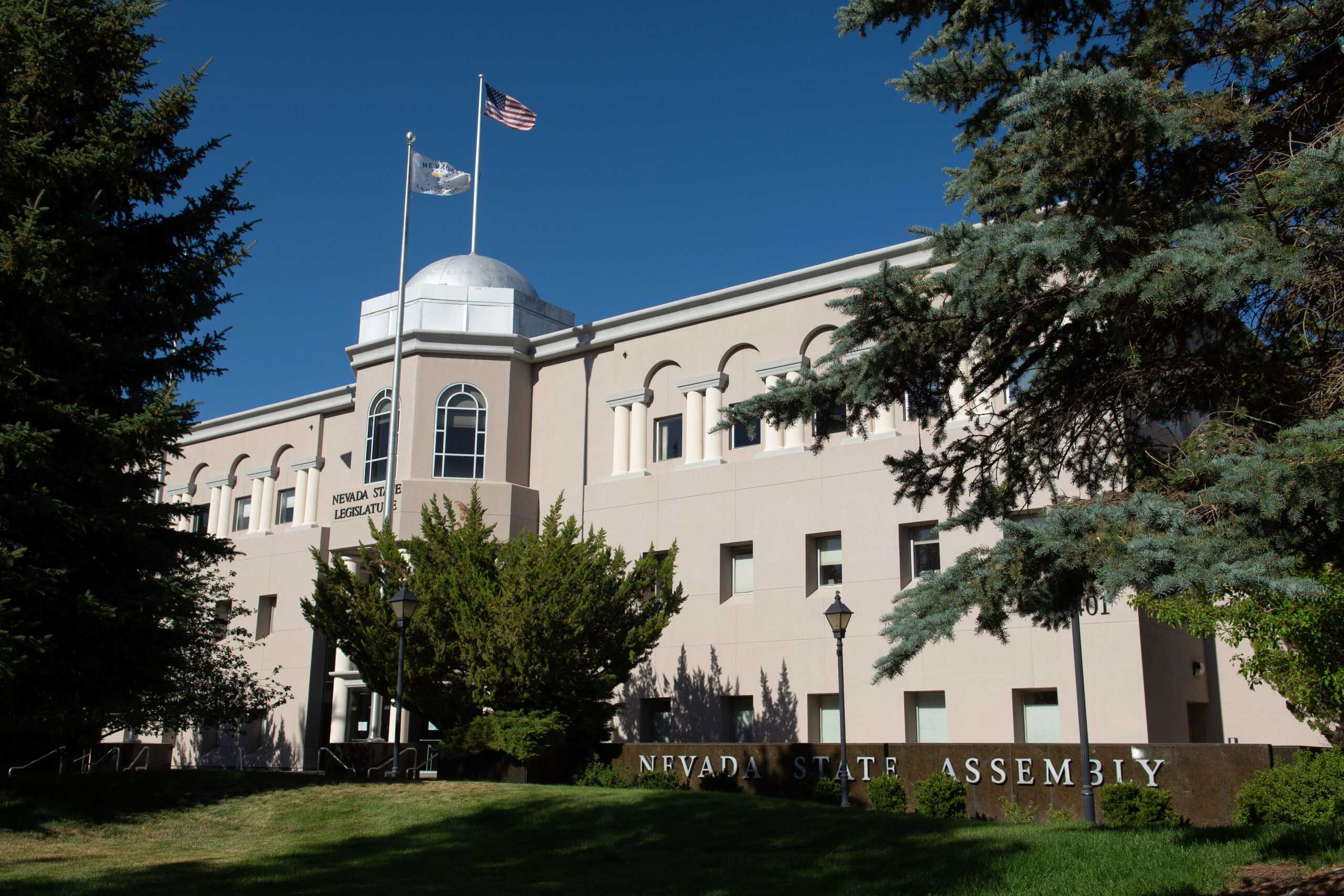The costs of small government

The costs of big government are widely acknowledged. However, as the current pandemic and recent destructive wildfires in Nevada and the region have demonstrated, there may be real costs to small government.
People are well-versed in the costs of big government. Among these are bloated budgets; oversized, clunky bureaucracies that resist change; and public employee pensions of catastrophic proportions. Conversely, the idea of small government is widely revered by conservatives and libertarians, and respected by many; after all, not even progressive candidates run on a platform of “big government.” As President Ronald Reagan shared in his 1989 farewell address to the nation, “[…] [M]an is not free unless government is limited. There's a clear cause and effect here that is as neat and predictable as a law of physics: As government expands, liberty contracts.”
Recent events, however, have laid bare the staggering toll in terms of both life and finances for not having a government that has a robust infrastructure with the capacity to respond to catastrophic events. Following the rapid spread of COVID-19 and the immediate closure of all non-essential businesses, which sent Nevada’s economy into a tailspin, state and local governments have continued to struggle to provide adequate public health assistance and financial assistance to Nevada workers, businesses, and families.
While we can debate what portion of these government deficiencies and resultant costs can be attributed to policy decisions, there is little doubt that at least some responsibility lies with the anemic, antiquated, and inflexible government systems when it comes to addressing systemic problems. Perhaps the most glaring and infamous example of a government system not up to the crisis of the moment is the hot mess involving the provision of unemployment relief to Nevadans. After almost seven months, the Nevada Department of Employment, Rehabilitation, and Training (DETR) is still slogging its way through the backlog of unemployment claims. Additionally, Nevada’s residential rental assistance program was paused almost immediately after it was launched because of system overload and confusion surrounding multiple application portals. Last week, we learned that the commercial rental assistance program was only able to disburse about 43 percent of its allocated funds because of the complicated application process and staffing constraints.
As I reported previously, Nevada underperformed during the first round of the Paycheck Protection Program (PPP), which has been attributed, in part, to personnel capacity constraints. Public agencies tasked with processing rental assistance applications and other social services have struggled to meet the overwhelming demand given limited staff, lack of sufficient technology and data experts, and archaic systems. DETR, for example, “headed into the pandemic with near-record low staffing.” In the face of the current public health emergency, the limitations of our state apparatus to respond to and recover from unexpected disasters are revealing themselves.
Widespread frustration, anger, and despair with state and local governments during the current crisis are palpable. Often, the anger and frustration have been directed at a particular agency or even a person (former DETR director Heather Korbulic resigned upon receiving death threats).
The hard truth, however, is that no single administration, political party, organization, or agency bears responsibility for the shortcomings of state and local efforts to respond adequately to the unprecedented needs in our community. The unpleasant truth is that we all bear collective responsibility for the challenges and gaps in our current disaster response and recovery systems.
In Nevada, we pride ourselves on limited state government, which is characterized, in part, by a business-friendly, low-tax environment and limited regulations. The result is a lean state apparatus in terms of both people (employment) and infrastructure. As such, we often neglect or postpone investments in information technology and management systems. For example, DETR has been characterized as having a “legacy, archaic system,” which includes a call center “built on the very old state phone system:” the agency was planning to seek on “project funding for a more efficient system technology” in 2021. Even Gov. Sisolak acknowledged that “the unemployment system has been underfunded for decades.” Additionally, the statewide grants management system is still not up and running, even as there is mounting pressure to plug our revenue shortfalls with federal grants.
Much-needed outlays in our state apparatus have decreased even as our population has grown and problems requiring a collective, public response – including wildfire response, drought, a pandemic, and even a mass shooting -- have increased. Whereas other states reduced state and local employment in the aftermath of the Great Recession, Nevada’s state apparatus has been on the decline since the turn of the century.
In 2000, Nevada had 235 state and local full-time equivalents (FTE) (excluding education) per 10,000 people. By 2019, Nevada had only 177 state and local FTEs per 10,000. Nevada ranks 48th in the United States in state and local government employment. The District of Columbia ranks first with 607 state and local FTEs per 10,000 population, followed by Wyoming (418 FTEs per 10,000 population), and Alaska (351 FTEs per 10,000 population).
The decline in the state apparatus has been particularly acute at the local level. In 2000, there were 163 local government employees (FTEs) per 10,000 population; as of 2019, there were only 116 local employees per 10,000 population.
Like some states, Nevada is disproportionately over-invested in large legacy workforces (such as fire, police, corrections, and education) while running lean on forward-thinking roles that involve strategy, data, and technology. In 2000, employment in fire, police, and corrections accounted for 28 percent of state and local public employment in Nevada; in 2019, it accounted for 31 percent (employment in health, welfare, and hospitals accounted for 21 percent). As an example of the consequences of the lack of data and technology positions, Nevada’s response to the pandemic has been characterized with real deficiencies in data collection around disease spread and contract tracing.
This continued underinvestment in government infrastructure has not only affected our state’s ability to respond to emergent and unexpected problems, like coronavirus, it has also undermined our ability to deal with problems that have been slowly building over time. For example, the current crisis in our state regarding the provision of mental health treatment services and the lack of supportive facilities are problems that have been a decade in the making.
Those who believe in the inherent value of small government may be hesitant to make much-needed investments in our response and recovery systems without accompanying conversations about accountability. They are right to raise their concerns, as the solution to a limited state infrastructure should not be to precipitously and indiscriminately throw money and personnel at agencies now suffering from years of neglect.
Yes, we need more state capacity and more people to support that increased capacity, but that increase must be accompanied by robust accountability mechanisms. Unfortunately, even before the current crisis, accountability measures have rarely been included in legislative proposals, contracts, or funded projects (e.g., Alorica). (In 2015, for the first time, several education reforms passed by the Legislature included a requirement that the programs undergo an external evaluation). Bungled efforts, like the $17 million state investment in Clark County School District’s Human Capital Management System (HCMS), which was launched with “known gaps in critical functionality” and has been described by some principals as a “disaster” – does not inspire confidence in the state’s ability to strengthen its infrastructure.
Importantly, in this digital age, we must also remember that greater state capacity does not always equate to more “big government” as Ronald Reagan once described it. We have traditionally thought about big government as more physical structures, personnel, and the accompanying costs. We must now move beyond such a narrow view of government infrastructure. Each expansion of state capacity does not require us to construct a new building and fill it with government employees. Rather, we must rely on the increasing number of powerful digital tools to expand the government’s ability to provide support. This is not to say that we will not have to spend money to make up for years of neglect of our infrastructure. Increased state capacity whether digital or physical still costs money. But we must do this in a targeted manner which takes into consideration modern digital tools.
The current crisis has painfully taught us that our small government can have severe consequences. And history teaches us that big government carries its own costs and risks. As decision makers draft a recovery plan for Nevada, we must include investments in infrastructure that strengthen Nevada’s ability to respond to and recover from emergencies. We need to invest in people – particularly strategy, data, and technology positions. We must strengthen our digital infrastructure to expand how quickly and efficiently we can provide aid to Nevadans. And we must continue to demand greater accountability around these investments. We can no longer suffer from small government with inadequate capacity and big government without accountability and strategic modernization. We must move beyond this old and unhelpful debate into an era of modern and efficient state systems and structures with the people and the capacity to respond in times of crisis.
Nancy Brune, Ph.D. is the founding Executive Director of the Guinn Center, a statewide, independent, nonpartisan policy research center. She is a Senior Fellow at the Boyd School of Law and serves on the Law and Leadership Program Advisory Council. Dr. Brune received her Ph.D. from Yale University and her Master of Public Policy and B.A. degrees from Harvard University. Prior to joining the Guinn Center, she was a Senior Policy Analyst at Sandia National Laboratories, where she worked on issues of national security. You can follow her on Twitter @NancyBrune or email her at [email protected].
